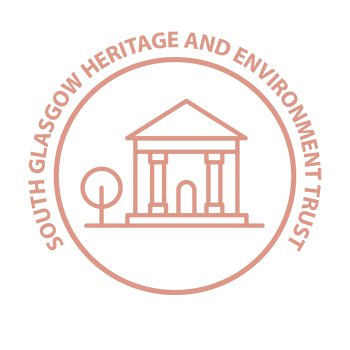FEATURED
The Cathcart Cemetery Scandal
While it can be entered at points from within Glasgow city’s south side, the picturesque Cathcart Cemetery sits largely in the modern-day council boundary of East Renfrewshire. Designed and laid out in 1878, it’s a tranquil place for locals and visitors to escape the urban hubbub, but less known are the circumstances surrounding the cemetery grounds’ purchase which have a whiff of scandal and mystery that lingers, writes Jacqui Fernie…
“There might not have been the slightest glimpse or sign of a burial ground, I might have mistaken the entrance as that of a grand residential estate, but for the words ‘Cathcart Cemetery’ modestly displayed in the wall angles near the main road.”
– An English gentleman quoted in Cathcart Cemetery and Surrounding District, 1888

Looking up Clarkston Avenue in Muirend today – some 133 years later – through the archway of trees, our friend’s first impressions of Cathcart Cemetery still hold true. The mature lime tree avenue sweeps through grand iron gates to the Scot Baronial gatehouse lodge beyond. No sign of graves or memorials – just the promise of a pleasant stroll in a grand country estate.

Cathcart Cemetery was laid out in around 1878, by one of Scotland’s foremost cemetery designers, William Ross McKelvie (1825 – 1893). McKelvie had previously been the Superintendent of the grand Victorian garden cemetery in Greenock, which had been planted out by the Curator of the Botanic Gardens in Glasgow and the man responsible for laying out the Glasgow Necropolis, Stewart Murray.
Designed for life & wellbeing as well as commemorating the dead
William came with an impressive pedigree. He designed cemeteries in Dundee and Wick and parks in Dundee and Aberdeen. Garden cemeteries were designed to be places for not only burying the dead, but green, pleasant spaces to be enjoyed, where people could walk in sylvan nature and be morally uplifted by the experience; a place to contemplate nature, life and of course, death (and to show off a bit).

Again, that is true today of Cathcart Cemetery as it was in 1878. The Victorian section is a semi-mature woodland, home to vibrant and thriving flora and fauna: rabbits, deer, and majestic monkey puzzle trees. As well as being the final resting place possibly over 30,000 people, including early pioneering footballers such as Joseph Taylor (the first captain of the Scottish National Team), Suffragette Henria Leech Williams, and artists Hannah Frank and George Henry.
Trouble in the Parish Board… origins of the scandal
But the Cemetery didn’t start out under the most harmonious circumstances. According to an article in the North British Daily Mail (now the Daily Record) in June 1877, a ‘squabble’ between the Cathcart Parish (Parochial) Board and some of its committee members broke out over who owned the land. The newspaper report has an air of resignation about it when it notes that these things happen in the West of Scotland.

It started in 1874 and the village of Cathcart was growing. And the good people of Cathcart called upon the Parish Board to provide space for a new burial ground. A sub-committee was duly set up and two members – Mr Martin and Mr Athya – were dispatched to negotiate the purchase of land which formed part of the Bogton Estate. In turn, the owner, Mr Gordon of Aitkenhead, agreed to sell the land to make way for the Cemetery.
Underhand dealings in the Board sub-committee?
After this it all gets a bit murky. A meeting of the Parish Board was called in March 1876, where four men were appointed to the sub-committee to conclude the sale with Mr Gordon, but according to the article, the minutes of this meeting have ‘strangely disappeared’ and no one knows what really happened.

A second meeting was called later that month by Messrs Martin and Athya with other mysterious benefactors. Again, no one knew who was there or what was discussed but a little after the formation of the Cathcart Cemetery Company Limited was announced.
Profit and a cunning plan wins the day
The problem here is that Mr Gordon had thought he was selling the land to the Parish Board, when in fact he’d sold the land to Mr Martin and his friends. They then subsequently re-sold the land to the Cemetery Company, making a considerable profit on the deal, £10,000 – £1.25 million in today’s money – to be split between the seven friends. The Parish Board were livid, calling the deal ‘a betrayal’ and intended to take their case higher and seek legal advice.

As the newpaper article concluded: “But for the moment, the action of the Parochial Board simply leaves those whom, by implication, it accuses of a very unpleasant transaction, in full enjoyment of the profits, and the pleasing reflection that possession is nine-tenths of the law.” The Cathcart Cemetery Company Ltd went into liquidation in 1979.
You can find out more about Cathcart Cemetery and who’s buried there on our website www.cathcartcemetery.co.uk
By Jacqui Fernie
Co-Chair, Friends of Cathcart Cemetery
Published: 26th August 2021
Image Sources:
1. Photos of Cathcart Cemetery Gatehouse, Monkey Puzzle tree and the image at the top of the article, courtesy of Friends of Cathcart Cemetery
2. 1895 Map of Cathcart Cemetery, courtesy of Glasgow City Archives
3. Sunny cemetery view: Creative Commons licensed photo by Felibriu on Flickr, 4th September 2020 (CC BY-NC 2.0)
4. All images by Michael Paley, 6th May 2020, donated to SGHET Archive’s ‘Southside Lockdown Lens‘ 2020 project Collection. SGHET are currently developing plans to have a digitised verion of this project, and our larger archive, created and made accessible to the public.

no replies